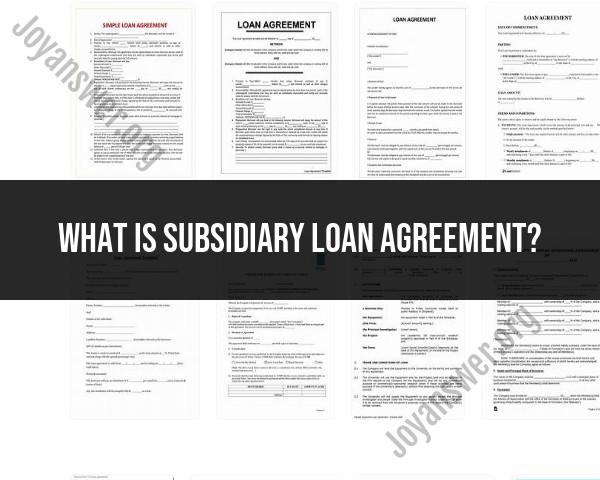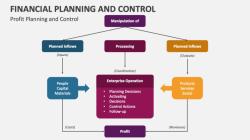What is subsidiary loan agreement?
A Subsidiary Loan Agreement is a type of legal contract where a parent company or lender provides a loan to its subsidiary company. It outlines the terms and conditions under which the loan is made, including repayment schedules, interest rates, and other obligations.
What is a Subsidiary Loan Agreement?
It is an agreement between a lender (often the parent company or an affiliated entity) and a subsidiary (a company controlled by the parent).
The agreement specifies the amount of money loaned, interest rate, repayment terms, covenants, and default conditions.
It helps regulate financial transactions within a corporate group or between related entities.
Key Features:
Purpose: To formalize and document a loan from a parent or related party to its subsidiary.
Terms: Include principal amount, interest rate, payment schedule, maturity date, and any security or guarantees.
Compliance: Ensures the loan is compliant with corporate governance and legal requirements, preventing misuse of funds.
Risk Management: Clarifies the responsibilities and liabilities related to the loan.
Why is it used?
To fund the subsidiary's operations or expansion.
To transfer capital within a corporate group.
To maintain proper records for auditing and regulatory purposes.
In short, a Subsidiary Loan Agreement is the formal loan contract between a parent company (or related lender) and its subsidiary, ensuring clear terms and legal protection for both parties.
What Is a Subsidiary Loan Agreement?
A subsidiary loan agreement is a contract between a parent company and one of its subsidiary companies. In this agreement, the parent company lends money to the subsidiary. This type of loan is often used for a subsidiary's operational needs, capital expenditures, or to help it get started. It's a formal, legal document that outlines the terms and conditions of the loan, including the principal amount, interest rate, repayment schedule, and any collateral.
How Does a Subsidiary Loan Differ From a Parent Loan?
A "parent loan" isn't a standard financial term, but the core difference lies in the relationship between the borrower and the lender. A subsidiary loan is specifically an intra-company transaction where the parent company is the lender and the subsidiary is the borrower. The terms are often more flexible and favorable than a loan from an external bank because the parent company has a vested interest in the subsidiary's success. A loan from an outside entity to either a parent or a subsidiary would be subject to market rates and terms.
What Are the Typical Terms in a Subsidiary Loan Agreement?
Typical terms in a subsidiary loan agreement include:
Principal Amount: The total amount of money being loaned.
Interest Rate: The rate at which the subsidiary will pay interest on the loan. This can be a fixed or variable rate.
Repayment Schedule: A detailed plan for when and how the loan will be repaid, including the frequency and amount of payments.
Term of the Loan: The total duration of the loan, from the date of disbursement to the final payment date.
Default Provisions: Clauses that outline the consequences if the subsidiary fails to meet the repayment terms.
Collateral: A parent company may require the subsidiary to pledge assets as collateral to secure the loan, although this is not always the case in these internal transactions.
How Is Liability Managed in Subsidiary Loans?
Liability is managed through the formal agreement itself. The subsidiary is a separate legal entity, and the loan is recorded on its balance sheet as a liability. The parent company records the loan as a receivable. This formal structure ensures a clear separation of liabilities between the two entities. In the event of the subsidiary's insolvency, the parent company, as a lender, would be a creditor, albeit often a subordinate one to external creditors.
What Are the Benefits and Risks of Such Agreements?
Benefits:
Lower Costs: Subsidiaries can often get more favorable interest rates and terms from their parent company than they would from a commercial bank.
Operational Flexibility: The parent company can structure the loan to align with the subsidiary's cash flow and growth strategy, offering a more flexible repayment schedule.
Simplified Process: The internal nature of the loan means less red tape and a faster approval process compared to external financing.
Risks:
Financial Strain: A struggling subsidiary might default, which can impact the parent company's financial health, as the parent's asset (the loan) may lose value.
Legal Complications: If the subsidiary becomes insolvent, the loan could be challenged by other creditors. A poorly structured agreement could complicate bankruptcy proceedings.
Tax Implications: The terms of the loan must be structured carefully to meet regulatory requirements and avoid negative tax consequences for both the parent and subsidiary companies.
Perceived Weakness: Relying heavily on parent company loans can be seen as a sign that a subsidiary is not financially independent or strong enough to secure external financing.












